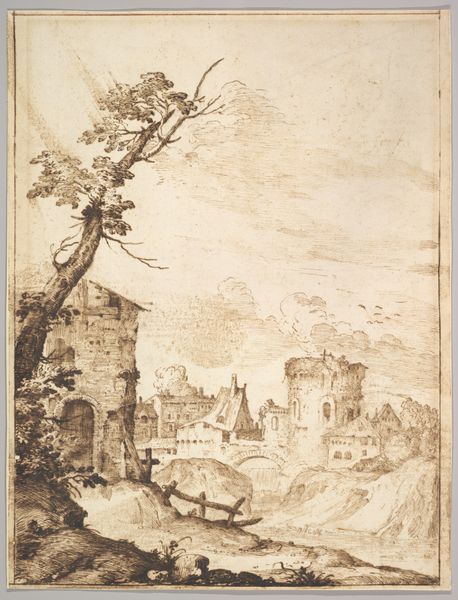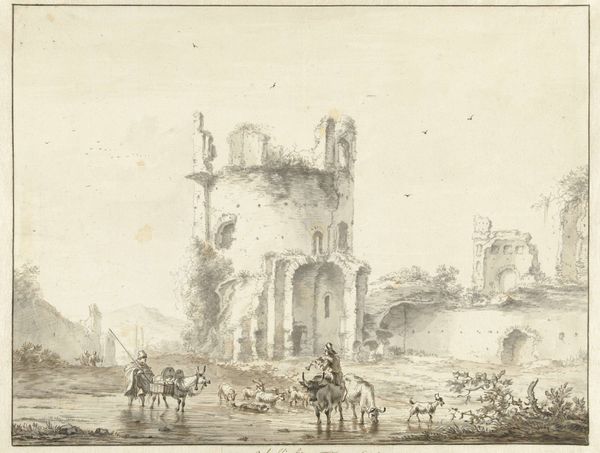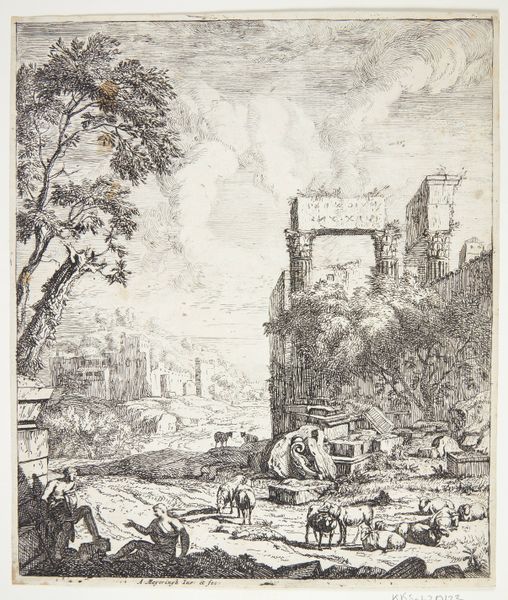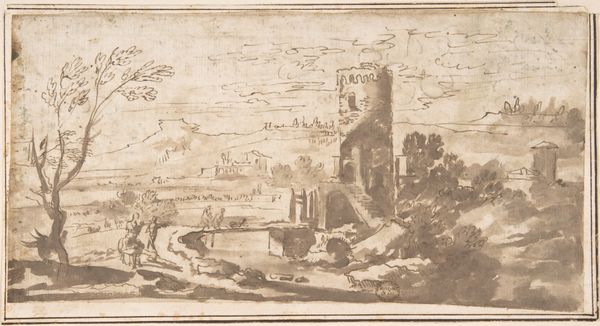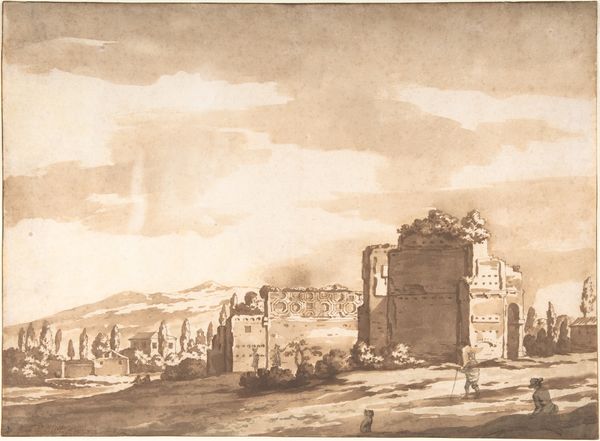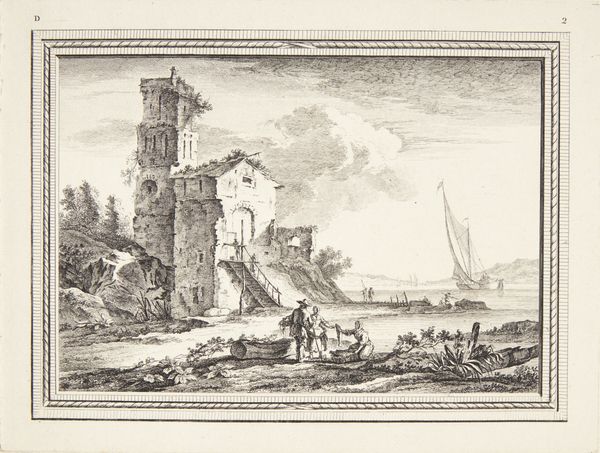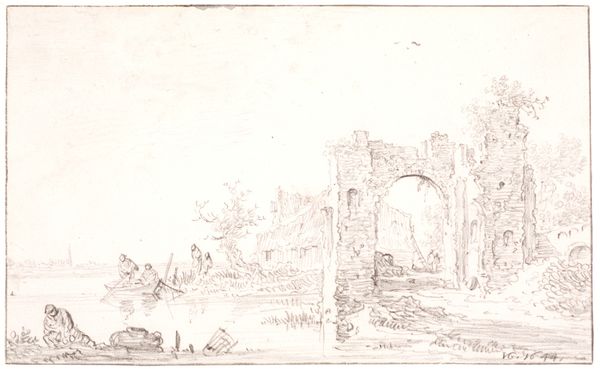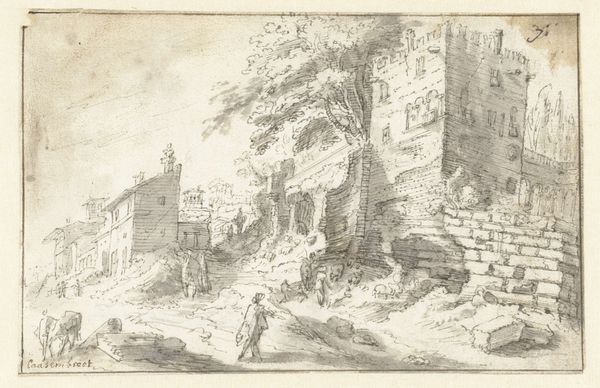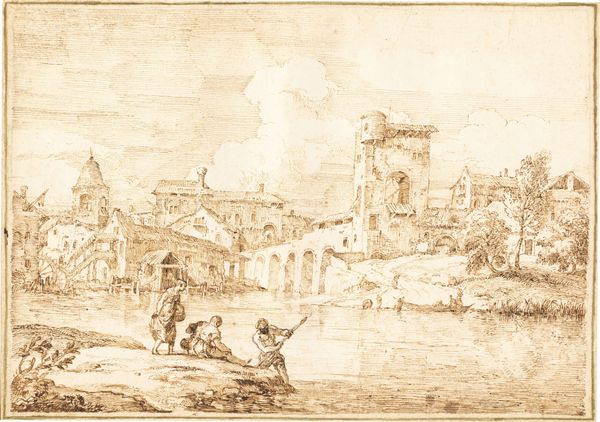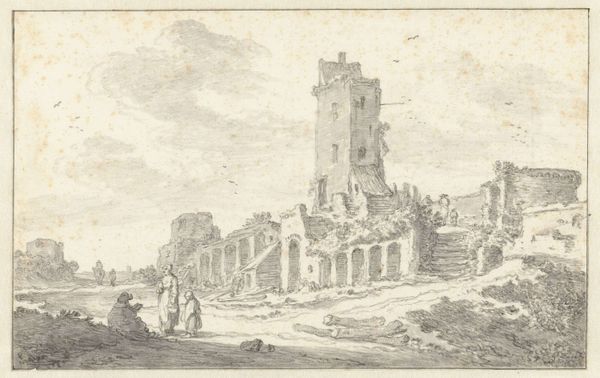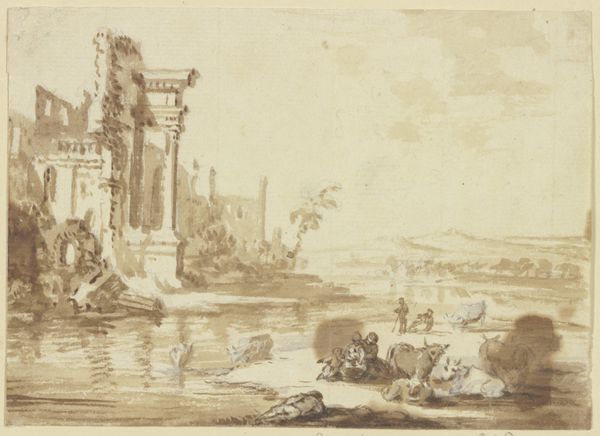
drawing, watercolor, ink
#
drawing
#
landscape
#
classical-realism
#
watercolor
#
ink
#
coloured pencil
#
romanticism
#
cityscape
#
history-painting
#
watercolor
Dimensions: overall (approximate): 52.1 x 36.3 cm (20 1/2 x 14 5/16 in.)
Copyright: National Gallery of Art: CC0 1.0
Curator: Giacomo Guardi's ink and watercolor drawing, "Capriccio of Classical Ruins with a Fortress," presents a compelling, imagined landscape. What’s your immediate response to it? Editor: A palpable sense of melancholic grandeur. The muted tones and crumbling architecture evoke a feeling of lost empires, a world of past glory weighed down by decay. The small figures seem dwarfed by the ruins, emphasizing a sense of human insignificance against the backdrop of history. Curator: Precisely! Note the delicate linework used to depict the ruins. Guardi masterfully utilizes washes of watercolor to create a tonal depth and texture, especially in the crumbling walls and cloudy sky. This attention to material detail underscores the Romantic obsession with ruins and the passage of time. Editor: I find the social dynamics implied in this 'capriccio' far more compelling. A 'capriccio' in this era gave artists the space to satirize contemporary culture or political figures behind the shield of imagination and antiquity. Could these ruins, presented in this particular composition, subtly critique Venetian power structures or perhaps warn against hubris? Who were the people reflected, and were they at risk? Curator: An intriguing perspective. However, the artwork, considered formally, is also making powerful compositional arguments: See how Guardi manipulates perspective, creating an unsettling tension between near and far? And the color relationships! The restrained palette of grays and browns, punctuated by delicate washes of gold, contribute to the artwork’s overall somber, contemplative mood. The texture gives this an aura of historical verisimilitude that asks, "What led to this end?" Editor: And that leads us back to power: how its abuse could have, in Guardi’s imagination, led to decline. How does Venice measure up to Rome, whose ruins were equally evocative of power, authority, and military control? Curator: Indeed, viewing art objects across historical, cultural and social structures allows us a more profound understanding. Thanks for sharing. Editor: And thank you for unpacking the formal qualities that create the evocative scene! Together, that history, construction and interpretation make an enlightening dialogue about art.
Comments
No comments
Be the first to comment and join the conversation on the ultimate creative platform.

